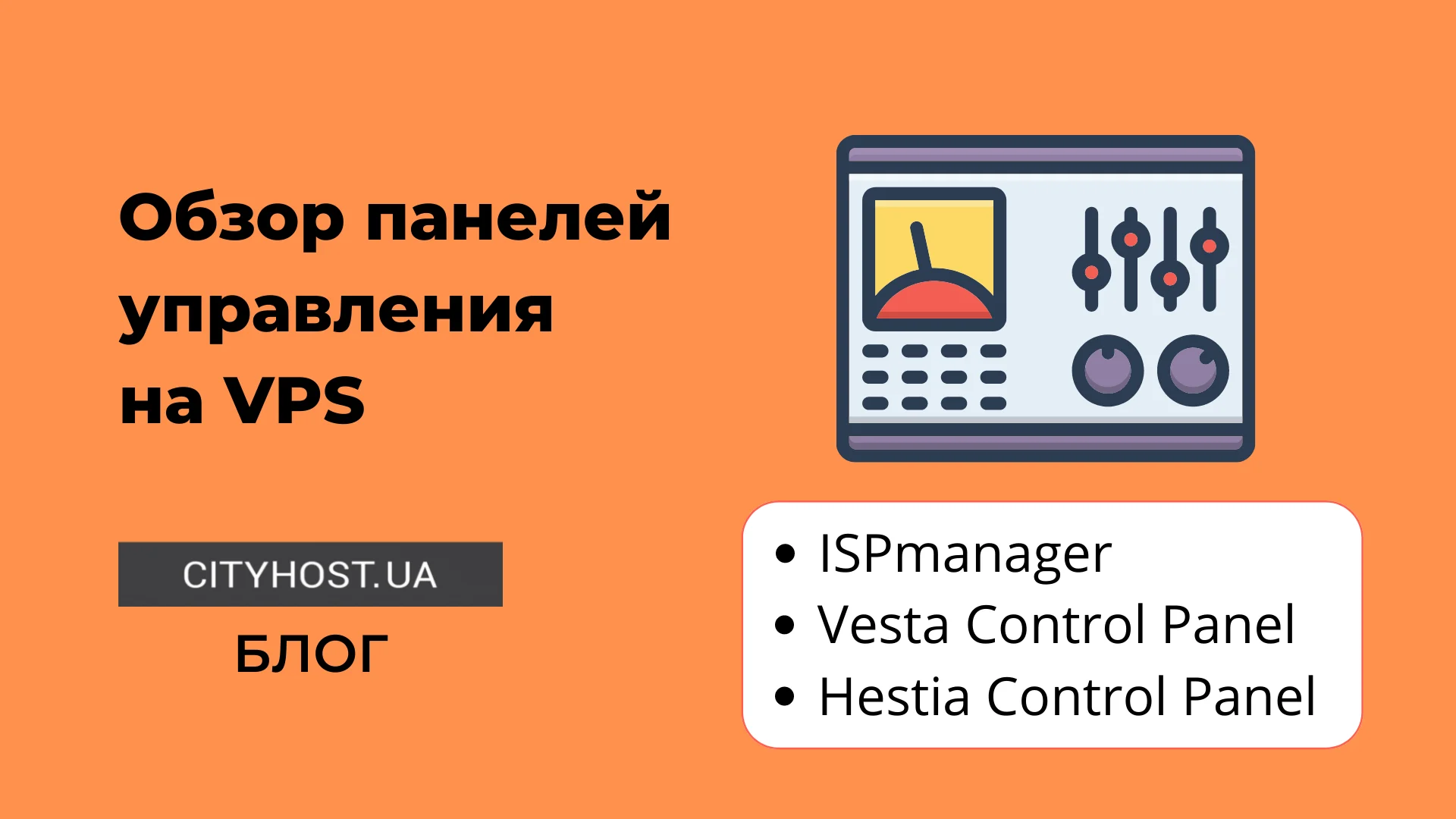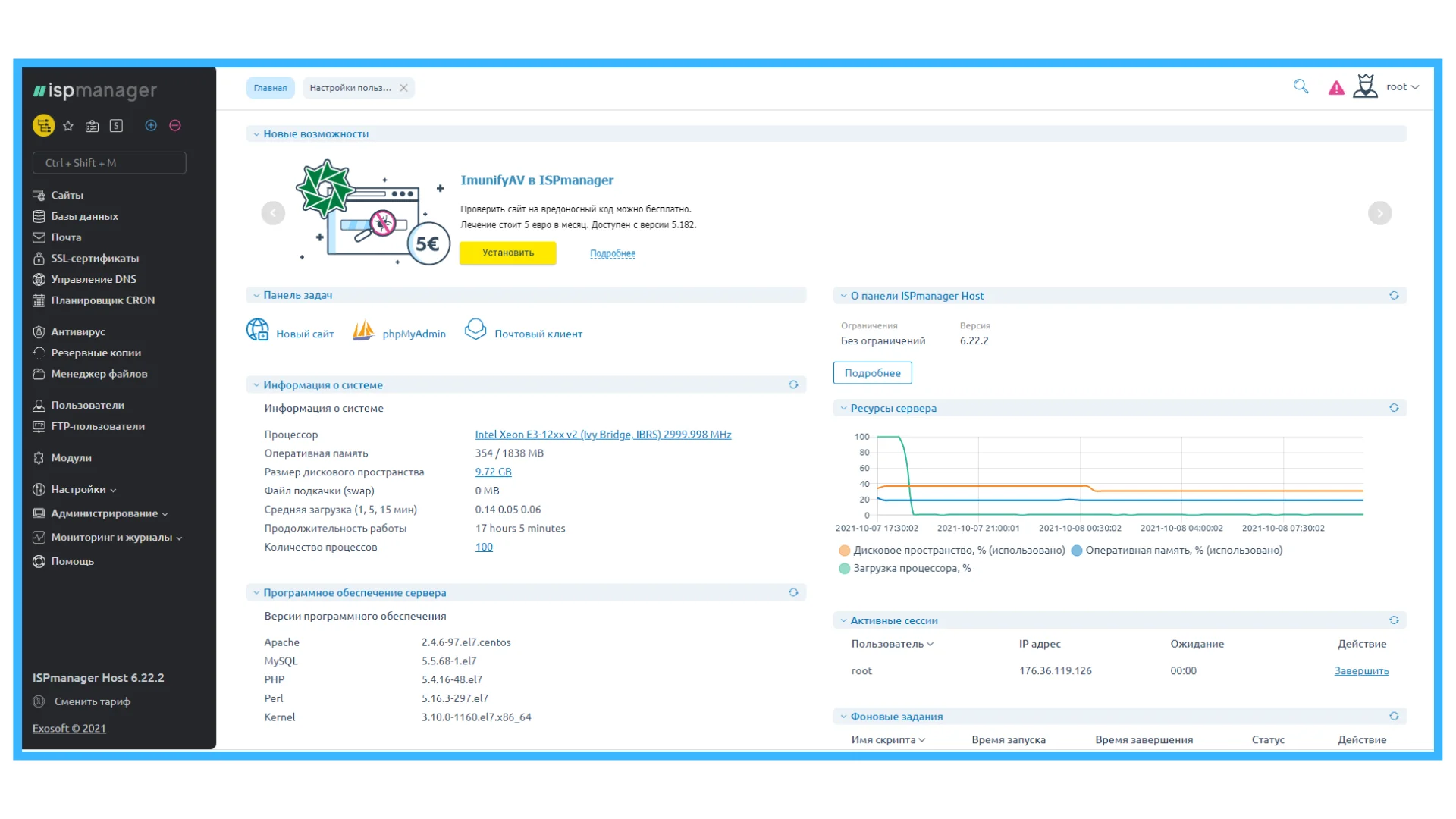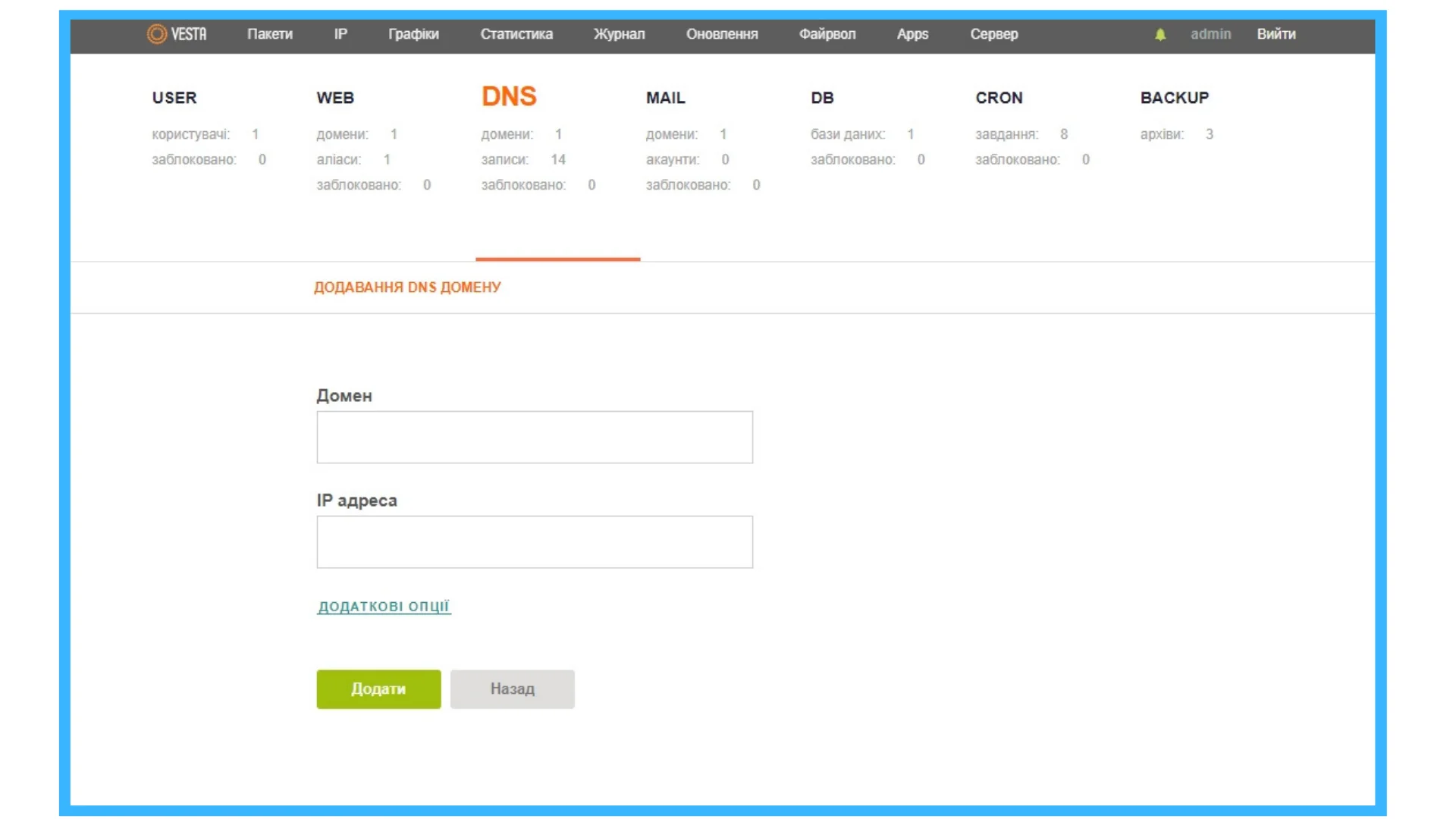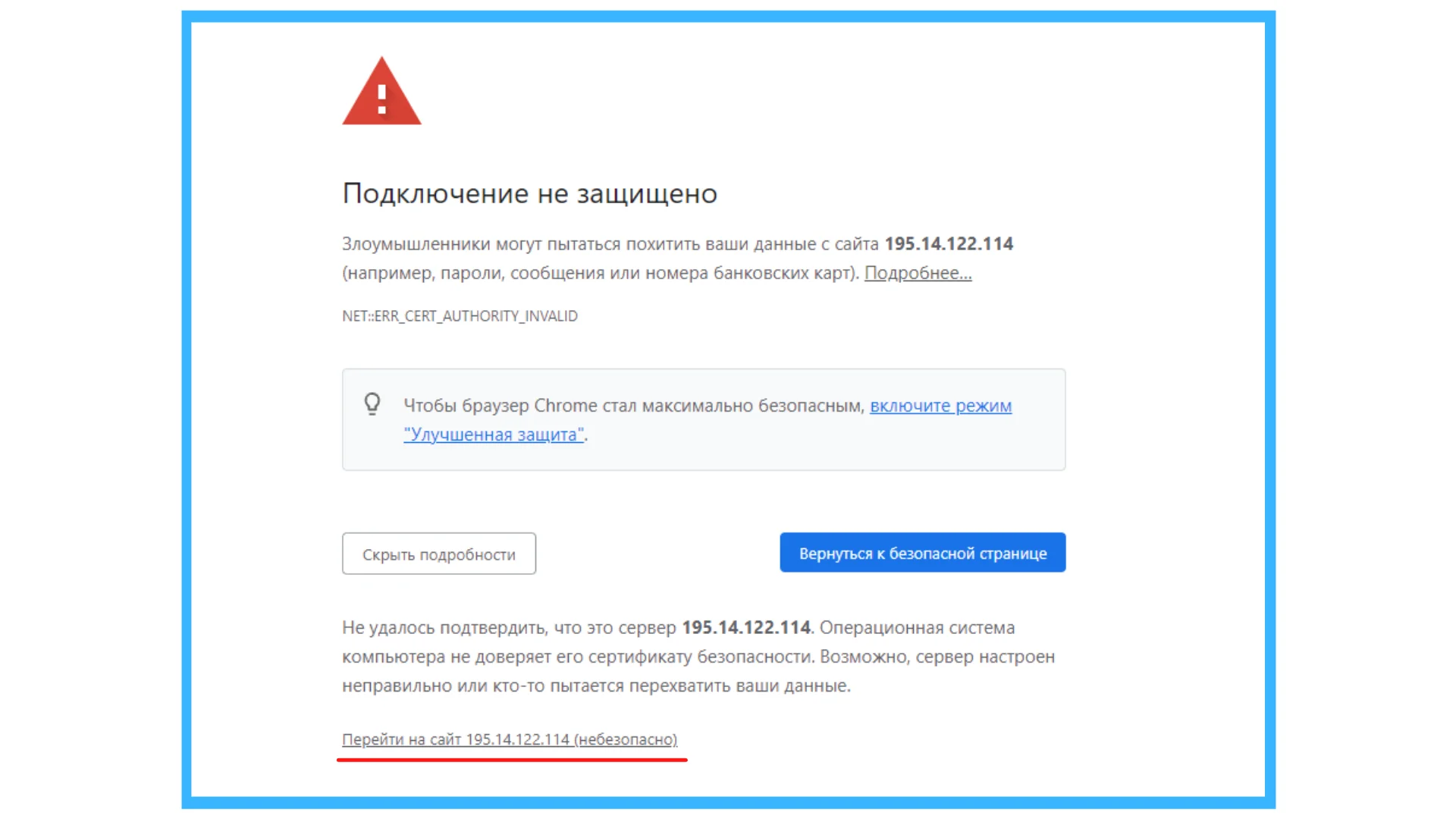
What is a control panel?
The control panel is the software for working with the server. It allows you to manage programs, configure hosting, create domains and mail services, automate work with scripts, configure FTP and file manager, and much more.
Is it necessary to install a control panel on the server along with the operating system? In most cases, it is necessary.
If the control panel is not installed on the server, then it is possible to work on it only through the console. It is also available on home PCs, it looks like this:

Only experienced administrators and programmers can work on the server console, since each action is performed by entering a text command.
Most often, tenants do not have such knowledge and take a VPS server for their needs — organizing office work, storing files, hosting a corporate website, etc. It is more convenient for them to work with a simple and clear panel - with it, even a person without experience can quickly learn how to manage a server.
There are many control panels and you can install any one that suits the needs of the user.
We offer our customers to install the three most popular control panels - ISPmanager, VestaCP and Hestia.
ISPmanager
It is a paid and closed source dashboard developed on Linux. The subscription is inexpensive, about $5 per month. ISPmanager is cheaper than other paid panels (eg CPanel) - this is one of the reasons why users choose it more often.
Another reason for its popularity is that many providers use it to service virtual hosting. Growing out of this format, clients order a server and continue to use ISPmanager, because they are used to it, it is convenient and understandable.
Currently, the panel is only partially translated into Ukrainian, so the Russian version is used more often.

The main page displays basic statistical information, and the necessary actions are grouped in the left panel. The software is completely designed for non-professionals, so that the owner of the server can administer it himself.
The basic configuration includes the necessary management tools:
- Creation and configuration of hosting
- Creation of DNS records and domains
- Working with Apache and Nginx web servers
- PHP version management
- Ability to work with CMS
- Creation of an unlimited number of MySQL / MariaDB databases
- File manager
- Management of the postal system
- Creating backup copies
- Multiple security tools (SSL certificates, firewall, kernel security)
- CRON scheduler
If some tool is missing, it can be ordered for a separate fee in the "Modules" section, but for standard work with the server, the available set is quite sufficient.
The main distinguishing feature from the free versions is that all components exist in the form of standardized configurations and do not allow for individual customization by users (the code, let's repeat, is closed).
The developers are constantly working to make the panel compatible with third-party software — for example, you can install an SSL certificate from Let's Encrypt and additional antiviruses.
There are three end-user packages — Lite, Pro, and Host. They differ in the number of domains (sites) that can be added to hosting and the cost: Lite — 10 domains (UAH 126/month), Pro — 50 domains (UAH 299/month) and Host — unlimited (UAH 399/month).
Vesta Control Panel
VestaCP is a free and open source control panel based on Linux. Installs on Debian, Ubuntu and Red Hat products.
The panel has the option of translating the interface into Ukrainian. This can be done by setting up an administrator account (in our case it is admin). The transition tab is in the upper right corner.

VestaCP allows you to manage all server functions, and after installation, the user receives all the necessary packages for work - almost the same as in ISPmanager. There is not only a built-in file manager (there is no access to site file management, you need to connect through the console or FTP), but you can use external programs. There's also no PHP version control — you'll have to install the necessary versions manually.
The panel has a simple and concise interface - the upper section contains statistical data and additional options, the lower section is intended for work.
VestaCP itself is free, but there are additional paid packages.
Administration experience is required to work with this panel, so VestaCP is not suitable for amateur use. This is the main criterion that distinguishes it from ISPmanager.
One of the significant disadvantages of the panel is that it stops releasing updates, so it can be installed only on old versions of the OS.
However, it is a popular panel and many people continue to use it because they are used to the functionality.
Hestia Control Panel
This is a free fork of VestaCP that installs on Debian and Ubuntu.
The history of this panel is as follows: when it became known that VestaCP updates were discontinued, the Linux enthusiast community improved the existing package and released a new one, called Hestia. The panel is constantly developing and updated, so it can be called a continuation of VestaCP.
They are very similar in interface, so those who are used to VestaCP will have no problem understanding Hestia. The visual difference is only in the default color scheme: in Hestia it is black.

It is positively distinguished from Vesta by the presence of a file manager and PHP version management.
These panels are installed on different versions of the OS — Vesta on older ones, Hestia on newer ones. Therefore, when choosing a panel, you must check its compatibility with the operating system installed on your server.
Features of installing panels
Since all the mentioned panels are developed on Linux, they are related to each other and have a number of common features.
It is better to put them on a clean server without other software, sites, hosting and users. Otherwise, problems and conflicts may occur during installation.
At the first login, the panel will try to open using the https protocol, but this is impossible - during installation, this certificate is not created, and there is no domain to which it can be attached.
Therefore, you need to click on the "Additional" button and go to the site manually (dangerous). At subsequent logins, the message will no longer be highlighted, but a reminder that the login is not protected will be constantly displayed in the address bar. This is normal.

These clarifications will help those who install the software on their own server. At Cityhost, we install the panels ourselves for customers, so they don't have to delve into such intricacies.
Which panel to choose?
ISPmanager, VestaCP and Hestia have many similar features, but also differ in many ways. ISPmanager is suitable for those who do not have administrator experience and intend to manage their hosting on their own. VestaCP and Hestia are similar panels, have a concise interface and are suitable for advanced administrators with programming skills. Thanks to the open code, they allow you to create unique settings and experiment.
The choice depends mainly on your user experience and the version of the OS installed on the server.





